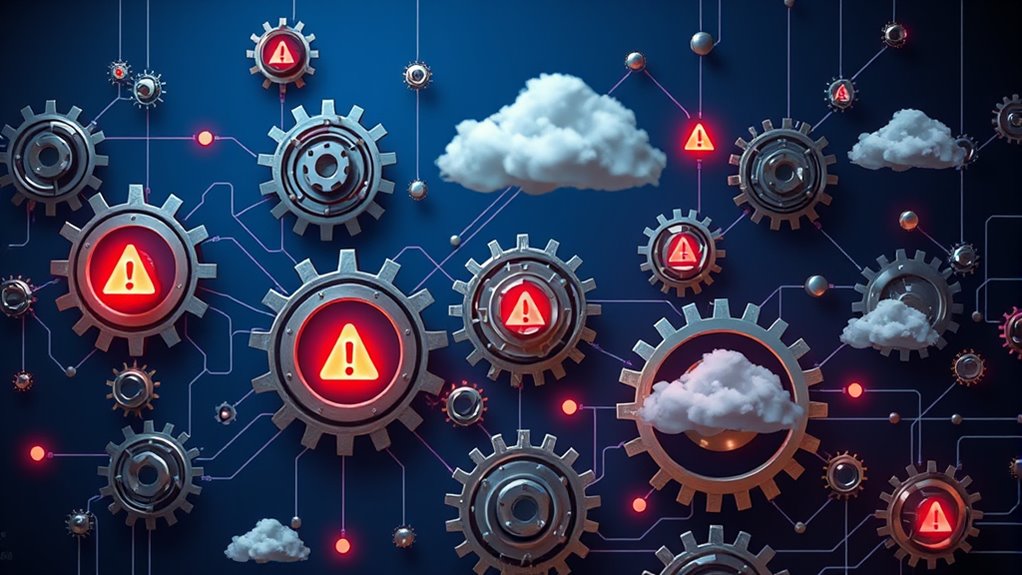iPaaS distinguishes itself through its cloud-native architecture, offering unmatched scalability and integration capabilities compared to traditional methods. Its low-code tools enable rapid deployment while maintaining enterprise-grade security and compliance standards. The platform’s extensive connector libraries and AI-powered automation streamline complex data flows between applications. Unlike point-to-point solutions, iPaaS provides centralized control and real-time monitoring across the entire integration ecosystem, making it the cornerstone of modern digital transformation initiatives.

Integration Platform as a Service (iPaaS) represents a thorough suite of cloud-based tools and services that enable organizations to connect, synchronize, and manage data flows between different applications and systems. What distinguishes iPaaS from traditional integration methods is its cloud-native architecture, which provides seamless scalability and deployment across multiple environments while maintaining centralized control through unified management consoles. Modern iPaaS platforms leverage advanced AI capabilities to enhance automation and data processing workflows.
A key differentiator of iPaaS is its dual approach to integration development. The platforms offer intuitive low-code/no-code tools that democratize integration capabilities, allowing business users to create connections without extensive programming knowledge. Simultaneously, they support code-first development for complex scenarios, complemented by pre-built templates and visual designers that accelerate implementation timeframes. Organizations can achieve maximum operational efficiency and competitive advantage through streamlined system integration processes.
iPaaS solutions excel in handling enterprise-scale operations through elastic scalability and robust performance features. The platforms automatically adjust to varying workloads, processing high-volume data flows and concurrent integrations while maintaining system stability. Advanced automation capabilities, including scheduled tasks and event-driven triggers, optimize resource utilization and guarantee reliable operation. The implementation of real-time communication ensures constant synchronization between connected systems.
Security and compliance capabilities set iPaaS apart from conventional integration methods. Built-in features like role-based access control, encryption, and automated audit trails guarantee data protection and regulatory compliance. These platforms typically maintain certifications for major standards such as HIPAA and GDPR, while offering secure API management with modern authentication methods.
The versatility of iPaaS extends across diverse integration scenarios, from connecting enterprise applications to enabling B2B interactions. The platforms support both real-time and batch processing, accommodating various business requirements. Modern iPaaS solutions include extensive connector libraries for popular systems, reducing implementation time and complexity while supporting custom integrations when needed.
The combination of these capabilities makes iPaaS particularly effective for organizations seeking agile, scalable integration solutions. The platforms eliminate many traditional integration challenges by providing extensive tooling, security features, and deployment options within a unified, cloud-based environment.
Frequently Asked Questions
How Much Technical Expertise Is Required to Implement and Manage IPAAS Solutions?
While iPaaS platforms offer no-code/low-code capabilities for basic integrations, the required technical expertise varies by implementation scope.
Business users can handle simple workflows through visual interfaces, but complex integrations often need IT professionals with API, data transformation, and security knowledge.
Organizations typically require staff with integration experience for ongoing management, monitoring, and troubleshooting, even when utilizing user-friendly tools.
Can IPAAS Handle Real-Time Data Synchronization Between Multiple Cloud Applications?
iPaaS effectively handles real-time data synchronization across multiple cloud applications through event-driven architecture and streaming integration capabilities.
The platform enables immediate data updates with two-way synchronization occurring in milliseconds, while smart API rate limiting guarantees reliable connections.
It maintains data consistency by automatically synchronizing changes across integrated applications, eliminating data silos and reducing errors.
Research shows 80% of businesses report revenue increases from real-time data synchronization through iPaaS implementation.
What Security Measures Protect Sensitive Data During IPAAS Integration Processes?
iPaaS platforms implement multiple layers of security to protect sensitive data during integration.
End-to-end encryption using AES-256 safeguards data in transit and at rest, while data masking and tokenization obscure sensitive information.
Role-Based Access Control (RBAC) restricts user permissions, and Multi-Factor Authentication adds verification layers.
Certified compliance with standards like ISO 27001 and SOC 2 guarantees adherence to security protocols, while continuous monitoring detects potential threats in real-time.
How Does IPAAS Pricing Compare to Traditional Integration Methods?
iPaaS pricing offers more cost-effective and flexible options compared to traditional integration methods.
While traditional approaches require substantial upfront licensing fees and infrastructure investments, iPaaS uses subscription-based models with predictable monthly or annual costs.
Key advantages include:
- Pay-as-you-go options based on actual usage
- Bundled maintenance and updates
- Lower total cost of ownership
- Scalable pricing tiers
- Reduced IT staff requirements
- No hidden infrastructure costs
Is It Possible to Migrate Existing Integrations to an IPAAS Platform?
Yes, existing integrations can be migrated to iPaaS platforms through a systematic process.
Organizations can leverage pre-built connectors and templates to shift their current integrations while maintaining functionality.
The migration typically involves evaluating existing systems, planning the shift, and implementing changes incrementally.
While some legacy integrations may require modifications, iPaaS platforms generally support various protocols and technologies, making migration feasible for most integration scenarios.









